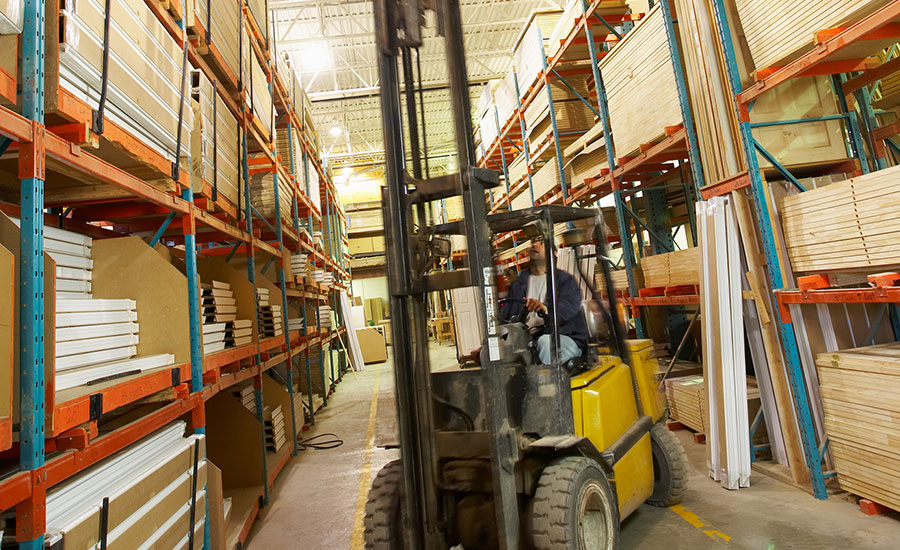Warehouses are a key and integral part of your business, but when run poorly, they can be very dangerous places for your workers to inhabit. It's important to regularly assess and appraise how you can improve your warehouse environment to keep your workers safe. Both in terms of keeping everyone unharmed and in boosting productivity levels, a well run warehouse is vital for your business.
Here are seven rules to implement in your workplace. Each of these rules will help keep your workers safe, while also keeping business running smoothly.
1. Identify all hazards
It's important to take the time and evaluate what potential issues and hazards there may be in the warehouse. Look out for simple slip and trip hazards such as cables left dangling or an obstacle sticking out at an awkward angle. Even something as harmless looking as a pencil can form a slip hazard if someone is rushing past and steps on it.
Are there any cracks or holes in the floor of the warehouse? Besides being a trip hazard, they can also cause issues for machinery such as forklifts, causing them to become damaged or harm one of your workers. Take the time to evaluate what could be an issue.
2. Up-to-date training
Up-to-date training is a crucial part of any well run warehouse. Besides ensuring that your staff work at their most efficiently, it also means that safe practices can be obeyed more regularly. It's all too easy to cut corners for the sake of speeding up work or because 'it's always been done this way.' Through regular training programs, you can keep your staff up to date with how they can avoid unsafe working practices, as well as ensure they know what to do in case of an accident or spill. A better informed workforce is always better for business.
3. Storage
Your warehouse is sure to be full of stock and other items. It's important that such products are stored safely. Improper storage can damage the stock but it can also harm your employees. Improperly stacked objects on high shelves can fall easily, potentially seriously injuring someone. Keep such loads stacked neatly and that risk is vastly reduced. Similarly, by loading items in smaller stacks, it's easier and therefore safer for your staff to retrieve items.
Also, be sure to teach workers on correct lifting techniques to avoid any potential injuries when picking up an item.
4. Cleanliness
A clean and well maintained warehouse is a safer warehouse. By keeping your workspace clean and tidy, there's less risk of slip or trip hazards. Everything should have its place and your employees should keep an eye on what needs to go where, thanks to the training procedures you've implemented. Encourage your workers to clean up after themselves. If a liquid spills on the floor, its clean up should be prioritised before anything else.
Some warehouse environments deal with potentially hazardous material. In this case, maintain appropriate protocol and ensure that such materials are stored safely and clearly marked so that there's little risk of spillage.
5. Equipment
It's vital that you use appropriate safety equipment as and when needed. Hardhats and safety goggles are an important part of any safe warehouse environment, but extra equipment such as high visibility jackets are also useful.
It's also important that any built in equipment such as sprinkler systems and alarm sirens work at all times and aren't blocked in any way. Make sure your staff are aware of emergency exits, signage, and how to use all emergency tools. Knowledge can do a lot when it comes to reducing the risk of injury.
6. Regular Inspection
It's human nature that we all become complacent over time about certain things. That's why it's important that you regularly inspect your warehouse for any potential issues. Regular inspections give you the time and space to look around and see what might need correcting. It's easy to slip into lazy habits of not tidying up as well as before. It's also possible for certain safety equipment to degrade over time, so this is the ideal opportunity to check it over and replace it, if required.
Inspections are also the perfect time to see if your warehouse is evolving over time. Are your business needs changing? Then your safety procedures may also need to be updated to cater for how your business is run. Adaptation and evolution is key for a thriving business.
7. Communication
Training is an important part of running a safe warehouse environment but so is effective communication between you and your staff. This can cover a multitude of situations. Discussing movement of stock or rearranging an area of the warehouse should involve plenty of communication. However, it can also be as simple as ensuring that everyone knows exactly what's going on at any given time. From giving a heads up that heavy stock is being moved right this moment, to planning ahead for the day.
Communication is also key for making everyone feel valued, and know what their role is within the workplace.



